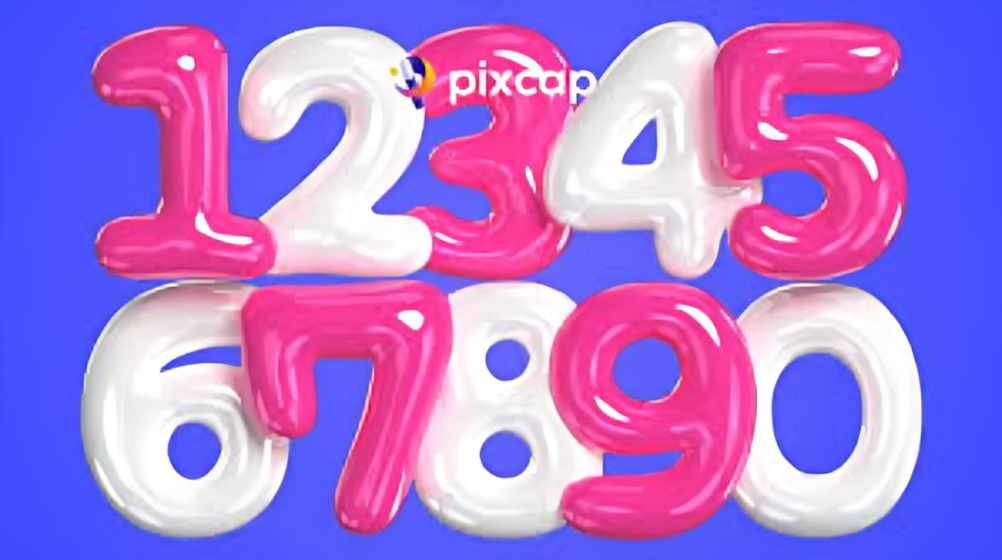When it comes to typography, the choice of fonts can significantly impact the overall look and feel of your design. This is especially true for number fonts, which play a crucial role in various contexts, from branding to web design, print materials, and beyond. In this comprehensive guide, we’ll explore the different types of number fonts, their applications, and tips for choosing the right one for your projects.
Understanding Number Fonts
Number fonts are specifically designed to represent numerical values in a visually appealing and legible manner. Unlike regular text fonts, number fonts are often created with distinct characteristics to ensure that numbers stand out, are easily readable, and convey the desired mood or message. This is particularly important in contexts where numbers are integral, such as financial reports, data visualization, signage, and digital interfaces.
Types of Number Fonts
- Sans Serif Number Fonts:
- These fonts feature clean lines without any decorative elements, making them ideal for modern designs. Common examples include Helvetica, Arial, and Futura. Sans serif number fonts are often used in digital interfaces and minimalist designs due to their readability.
- Serif Number Fonts:
- Serif fonts have small decorative strokes at the ends of letters, giving them a more traditional and formal appearance. Examples include Times New Roman, Georgia, and Baskerville. Serif number fonts are suitable for printed materials such as books, newspapers, and magazines, where a sense of reliability and authority is desired.
- Display Number Fonts:
- These fonts are designed to grab attention and are often used for headlines and titles. They may have unique shapes, styles, and embellishments. Examples include Impact, Bebas Neue, and Rockwell. Display number fonts can be particularly effective in advertising, packaging, and promotional materials.
- Monospaced Number Fonts:
- Monospaced fonts have characters that occupy the same amount of horizontal space. This uniformity makes them ideal for coding, programming, and data presentation. Examples include Courier New and Consolas. Monospaced number fonts are also popular in technical and scientific documents.
- Handwritten Number Fonts:
- These fonts mimic the appearance of handwritten text, giving a personal and casual touch. Examples include Pacifico, Dancing Script, and Fredericka the Great. Handwritten number fonts can be used in invitations, greeting cards, and creative projects where a personal connection is important.
Applications of Number Fonts
1. Branding and Logo Design
Choosing the right number font is critical in branding and logo design. The font you select should reflect your brand’s personality and values. For instance, a tech company might opt for a sleek sans serif font, while a luxury brand may choose an elegant serif font. Numbers often appear in logos, product names, and promotional materials, making it essential to choose a typeface that aligns with the overall brand identity.
2. Data Visualization
In today’s data-driven world, effective data visualization is crucial for conveying complex information. Number fonts’s play a significant role in charts, graphs, and infographics. A clear and legible font can enhance comprehension, while a poorly chosen font can confuse the audience. When designing data visualizations, consider using sans serif or monospaced number fonts’s for clarity and readability.
3. Web Design
In web design, number fonts contribute to user experience and accessibility. Choosing web-safe fonts ensures that your design looks consistent across different devices and browsers. Many web designers prefer sans serif fonts for body text due to their legibility on screens. However, for headings or calls to action, display number fonts’s can help grab attention and improve engagement.
4. Print Materials
From brochures to business cards, print materials rely heavily on typography. Number fonts are used in various contexts, including price tags, statistics, and contact information. It’s important to choose a font that remains readable even in small sizes. Serif fonts are often preferred for printed materials because of their classic appeal and readability in long-form texts.
5. Signage and Wayfinding
Number fonts are vital in signage and wayfinding systems. They need to be legible from a distance and quickly understood by passersby. Sans serif fonts are commonly used in these contexts due to their clean and straightforward appearance. Consistency in font choice across signage helps create a cohesive visual identity for businesses and public spaces.
Tips for Choosing the Right Number Font
- Consider Your Audience:
- Understanding your target audience is essential when selecting a number font. For example, a playful, handwritten font may resonate well with a younger demographic, while a classic serif font may appeal to an older audience.
- Match the Font to the Context:
- Different contexts call for different fonts. Ensure that the number font you choose aligns with the message you want to convey. For professional contexts, such as reports or presentations, opt for more formal and legible fonts.
- Prioritize Legibility:
- Regardless of the style you choose, legibility should always be a top priority. Test the font at various sizes to ensure that it remains readable in all applications.
- Limit the Number of Fonts:
- Using too many different fonts can create a chaotic design. Stick to two or three complementary fonts to maintain a clean and cohesive look. Pair a number font with a contrasting text font to create visual interest.
- Test in Context:
- Before finalizing your font choice, test it in the actual context it will be used. This could involve creating mockups or prototypes to see how the number font interacts with other design elements.
Popular Number Fonts to Consider
1. Helvetica Neue
- Type: Sans Serif
- Use Cases: Web design, branding, and print materials
- Characteristics: Clean, modern, and highly legible
2. Bodoni
- Type: Serif
- Use Cases: Fashion branding, editorial design, and print materials
- Characteristics: Elegant, high contrast, and sophisticated
3. Bebas Neue
- Type: Display
- Use Cases: Headlines, posters, and advertisements
- Characteristics: Bold, condensed, and impactful
4. Courier New
- Type: Monospaced
- Use Cases: Coding, technical documents, and data presentation
- Characteristics: Uniform spacing, retro appearance, and easy readability
5. Pacifico
- Type: Handwritten
- Use Cases: Invitations, greeting cards, and casual branding
- Characteristics: Fun, informal, and whimsical
Conclusion
Choosing the right number font is an essential aspect of effective design. Whether you’re working on branding, data visualization, web design, or print materials, the font you select can significantly influence how your message is perceived. By understanding the different types of number fonts, their applications, and following best practices for selection, you can enhance the visual appeal and clarity of your designs.
So, the next time you’re faced with selecting a number font, remember the importance of context, legibility, and audience. With the right font, you can elevate your design and ensure that your numbers stand out effectively. Happy designing!

